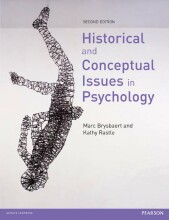Sommerville; social cognition
34 important questions on Sommerville; social cognition
How do we call the extend to which an individual can identify, perceive, and understand cues and contexts in social interactions along with being socially respectful to others?
What are the different levels of Bronfenbrenner's model?
- the individual level
- the microsystem
- the mesosystem
- the exosystem
- the macrosystem
- the chronosystem
Which level of Bronfenbrenner's model is described; includes: gender, age, health, etc.
- Higher grades + faster learning
- Never study anything twice
- 100% sure, 100% understanding
Which level of Bronfenbrenner's model is described; includes: family, health services, church group, neighborhood play area, peers, school.
Which level of Bronfenbrenner's model is described; includes: friends of family, mass media, social welfare services, legal services, neighbors.
Which level of Bronfenbrenner's model is described; includes: attitudes and ideologies of the culture
Which level of Bronfenbrenner's model is described; includes: time, and sociohistorical conditions.
How do we call the ability to achieve personal goals from interactions with others, while maintaining a positive relationship with the other person?
What are the characteristics of psychopathy?
- lack of empathy, repentance and emotional depth
- intelligence, charm and eloquence
- antisocial behavior and boldness
What are the components involved in social cognition?
- perception
- attention
- emotional recognition
- empathy
- theory of mind
- working memory
- decision making
- inhibiting
- planning
Which networks of the social brain are there?
- mirror/simulation/action-perception network
- amygdala network
- mentalizing network
- empathy network
Which brain areas belong to the mirror/simulation/action-perception network?
- inferior frontal gyrus
- lateral parietal cortex
What are the functions of the mirror/simulation/action-perception network?
- recognition of other people's actions
- planning of own actions
What are the functions of the amygdala network?
- recognition and evaluation of emotional and social stimuli
What brain areas belong to the mentalizing network?
- medial prefrontal cortex
- temporal parietal junction
What is the function of the mentalizing network?
- what does the other think
- recognize social abilities in others
Which brain areas are involved in the empathy network?
- amygdala
- orbitofrontal cortex
- anterior insula
What are the functions of the empathy network?
Describe the emotion recognition task.
- participants were shown a picture of only the eyes in a state of emotion (small surface around the eyes too)
- around the picture where four emotions from which the participants had to choose.
- task was done in a scanner, to show mentalizing system.
- women were better than men, which were better than people with autism
Describe the social feedback task by Gunther Moore.
- a person was shown a picture for 3 seconds and was asked to estimate if that person would like them (being showed their picture)
- answer was shown on the right of the picture for 1 second
- the feedback was shown on the left side of the picture for 2 seconds, was believed to be the answer of the person on the picture but was in fact random.
- performed in scanner to see network activations
- heart rate decreased when faced with unexpected rejection
- increased activity in the medial prefrontal cortex when rejected unexpectedly
Describe the chat room task by Silk.
- participant was given a choice who they would rather chat with about a topic out of two pictures
- followed by a chat session or rejection
- pupil dilation was measured
- all ages show pupil dilation when rejected
- biggest dilation with adolescents
- pupil dilation associated with activity in social brain areas
Describe the cyberball test by Sebastian.
- it's an online ball game with social exclusion
- you are the third player in a throw and catch game.
- in part 1 you get the ball 30% of the time
- in part two you never get the ball.
- medial prefrontal cortex activity higher in young adolescents when excluded
- lateral prefrontal cortex activity lower in adolescents
- adolescents with many friends respond less strongly
- extend of medial prefrontal cortex activity can predict depressive symptoms later in life
Describe the prosocial cyberball test by sebastian
- you are the fourth player in a throw and catch game.
- another player is getting excluded
- do you compensate by throwing him the ball everytime?
- scans check for activation in the brain
Describe the ultimatum game test.
- a proposer gets a sum of money provided to be divided between him and the responder.
- the responder gets to accept or reject the offer
- if rejected no one gets any money
- increase in making fair offers with age
- temporal parietal cortex activity increases with age
Describe the bar lab experiment bij Larsen.
- a single participants or a group enter the bar lab where a trained assistant is either drinking alcohol or not
- see wether the participants drink too or if not at first, when do they start drinking.
- speed of sipping imitated more with alcohol than with soda
When does puberty start?
- for girls at first menstruation
- for boys at first ejaculation (wet dream), size of the testicles is better measure based on hormones
How do we call a girls first period?
Why do we see a decline in the age of the menarche?
What are the risks of adolescence?
- mental problems often start during adolescence
- deviant behavior arises during adolescence
What is the resilience of adolescence?
- period of increased flexibility, learning capacity, social exploration
- many mental problems disappear after adolescence.
How does the brain develop during adolescence?
- gray matter increases, increasing speed different for different areas.
- evolutionary old areas develop first, the sensorimotor areas
- areas involved in higher cognition develop last, prefrontal cortex
- amount of short connections between areas decreases
- amount of distant connections between areas increases
Describe the responding to emotions test with adolescents.
- performed in a scanner
- watching pictures of emotions
- done with children, adolescents and adults
- shows that adolescents had a higher activation of the amygdala than children or adults
What was the score of children, adults, and adolescents on the emotion reading test with eyes?
- children < adolescents < adults
- activity of the medial prefrontal cortex decreases linearly with age with emotion recognition tasks
With social evaluation, how does the development of the activity of the medial prefrontal cortex go?
The question on the page originate from the summary of the following study material:
- A unique study and practice tool
- Never study anything twice again
- Get the grades you hope for
- 100% sure, 100% understanding
































